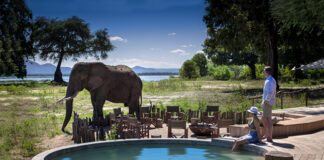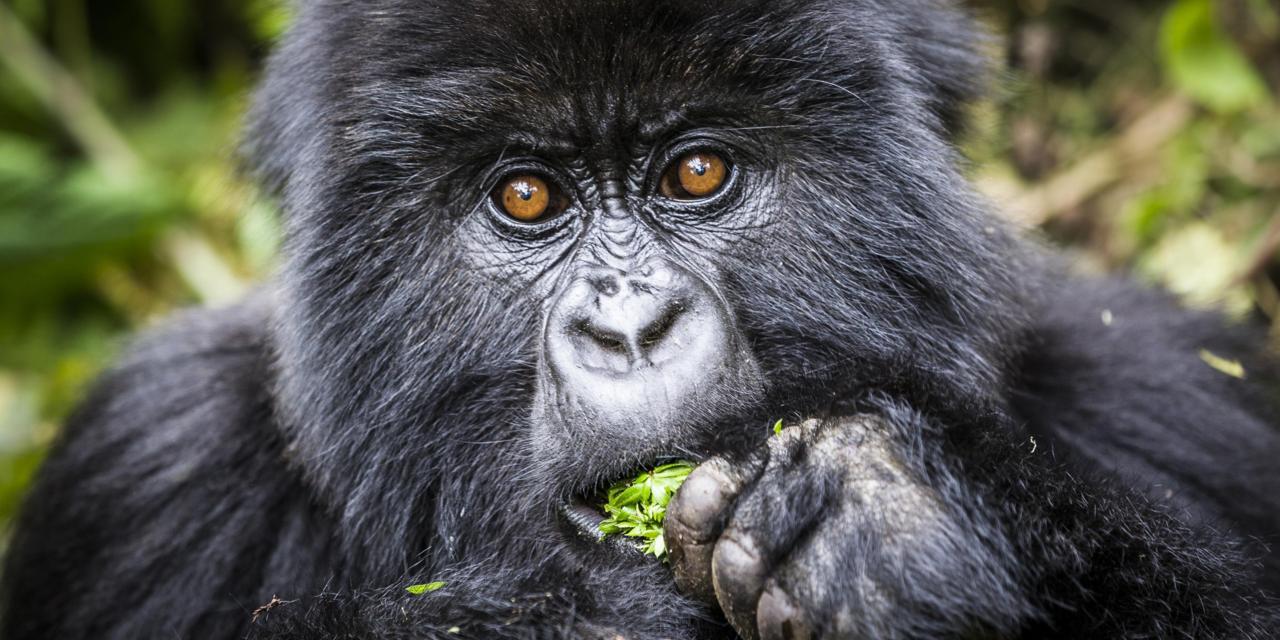Grand-Bassam, Ivory Coast
Proudly touting its UNESCO World Heritage tag, Grand-Bassam bursts forth from the Ivorian coast with the medley of elegant Parisian mansions and crafted colonial municipal buildings that is the Ancien Bassam district.
Now crumbling and creaking with age, this area once reigned as the capital of French Ivory Coast. Some of the buildings have been returned to their former glory, and visitors can still spy out the great Cathédrale Sacré Cœur and the enthralling Museum of Costume.
New Grand-Bassam is where most of the action takes place today, while the beaches to the west and east are where the resort hotels reside.
Abidjan
The sprawling, beating heart of the nation makes its home on the south coast, along the wide coastal reaches of the Ebrié Lagoon. With more than four million people calling it home, it hails in as the second-largest metropolis in all of West Africa.
And although not officially the capital of Ivory Coast (that honour goes to Yamoussoukro), it’s perhaps the better city to go for an introduction to the nation.
Visitors can wander the frenetic streets of the buzzing central Plateau district, see the looming Francophone spires of St. Paul’s Cathedral, hit the National Museum, party down heady Princess Road, and eat local cassava curries on the street corners.
Waterfall in Man
Springing up from the rain-doused, rugged edges of the soaring Toura Mountains, deep in the heartlands of the country, the rustic town of Man comes surrounded by seemingly endless swathes of verdant plantain farms and cocoa plantations.
The peaks of Tonkoui and Toura – the two highest in Ivory Coast – dominate the horizon, while it’s the crashing courses of the Cascades waterfall that really draws the crowds.
Others will come to delve into the famous bamboo forests that filter out from the center, where multi-coloured butterflies flutter by and rare insects inhabit the undergrowth.
Taï National Park, Ivory Coast
A colossal slab of over 3,000 square kilometres is taken up by the vast reserves of the Taï National Park, making it one of the greatest protected areas of what remains of the Upper Guinean rainforests – once the dominant habitat in all of West Africa, ranging from Gabon all the way to Senegal.
A feral land, it’s carved with colossal river valleys and dressed in moist woods, spiked with otherworldly inselberg mountains and fringed by rolling savannah.
And then there’s the fauna, which includes the endangered pygmy hippopotamus, swinging olive colobus monkeys, duikers and chimpanzees.
Jacqueville Beach
Fringed by a stretch of typically Ivorian ivory sands, little Jacqueville spills down into the sea from the far side of the Ebrié Lagoon, its sun-kissed beaches emerging from the swathes of pineapple groves to meet the frothy rollers of the Atlantic Ocean.
Clusters of old Parisian arcades and colonial builds stand decaying under the shade of the palm trees, while thatched beach huts meet painted timber longboats along the shore.
It’s a great place to come and get a feel for the pretty seaside character of this country, and all just a stone’s throw to the west of the capital at Abidjan to boot!
San-Pédro
San-Pedro’s harbours jut out from the southern forests of Ivory Coast like great tendrils poking into the Atlantic waters.
The second-largest port town in the country, this spot on the sea has been churning out huge cargos of metal ores and minerals and fish for decades.
Around it has exploded a lively, energetic and endearingly gritty city of low-rise homes and dusty streets, all interposed with the occasional nightclub and beer bar.
There are also plenty of natural draws beckoning nearby; from the primeval Upper Guinean rainforests of the Taï National Park to the shining beaches of Bas-Sassandra.
Basilica of Our Lady of Peace, Yamoussoukro, Ivory Coast
A visit to Yamoussoukro is a strange experience. Imbued with wide boulevards and grand open spaces, shiny new (or at least relatively new) governmental buildings and high-rise hotels, the metropolis of 300,000 can seem like a ghost town.
It’s worth remembering that it was only chosen as the capital of Ivory Coast back in 1983 – a pet project of President Houphouet-Boigny’s, who was actually born here in 1908.
Still, there are some interesting sights, and not least of all that colossal Basilica of Our Lady of Peace; the largest Christian church on the planet and a mass of domes and columns that reflects the grandeur of Rome itself!
Mosquée de Korhogo
Contrarian Korhogo has a long history of political instability and opposition to the status quo. It was here that the latest round of coup d’états unfolded in the early 2000s, with rebel groups proclaiming against the government.
Today, things are a little quieter – than or at least as quiet as it’s possible to be in forever radical Korhogo! Aside from the revolutionary tendencies, the mud-caked city is a truly fascinating place, bustling with bazaars packed with cotton and cashew nuts and spices, the enchanting Woodcarver’s Quarter beckoning with whittled crafts, and the Village des Tisserands (located just a stone’s throw away) home to batik cloth makers and more!
Bouaké
One of the great crossroads between the Ivorian north and the Ivorian south, Bouaké sits virtually midway between the Atlantic coast, the northern borders, Guinea in the east and Ghana in the west.
And while the national divisions manifest here in the form UN peacekeepers, the city remains something of a fusion of all the various tribal and political influences at work, complete with an earthy character and interesting locals.
It’s the markets, the arts and the crafts that really center stage though. The whole region of the Eastern Plantations is not only famed for its cotton output, but you’ll spot local traders touting black-clay pots around the rises of St Michael’s Cathedral, and oodles of other fascinating emporiums to explore.
Comoe National Park
Spread-eagle between the northern cities and the Ghanaian borderlands, the sweeping lands of the Comoe National Park are a veritable magnet for eco tourists and outdoorsy types heading to Ivory Coast.
They bloom with weathered gallery forests and rolling savannah plains, the occasional splinter of soaring rock and the winding meanders of the Comoé River.
And around their riparian habitats, visitors can look for the likes of yellow-backed duikers and Mona monkeys, colobuses and pangolins, stalking leopards and stalking lions, and plenty, plenty more!
Mount Nimba Strict Nature Reserve
Crawling across the borders of the Ivory Coast and into the wild, wild reaches of southern Guinea, this soaring arch of mountainous peaks is considered by UNESCO to be one of the most important nature reserves in all of West Africa.
Why? Well, the habitats range from rare lowland rainforests to altitudinous grass plains and that gives rise to one of the most kaleidoscopic line-ups of fauna in the region.
Walkers who make the intrepid journey here (usually from nearby Danane) can expect chimpanzees and rare butterflies, alien toad species and otter shrews to boot.
Assouinde
Just a little further along the coast from Grand-Bassam and attached to the metropolis of Abidjan by the main road A100, Assouinde is perhaps the most celebrated beach resort in the country.
Popular with city slickers eager for a break from the fray of the town, the long stretches of yellow sand here host a clutch of great hotels and accommodations.
On the one side, these back onto the mirror-like lagoons and winding waterways of the Lagunes region, and on the other they spill into the Atlantic, where rolling surf and plenty of sunbathing and beachcombing opportunities abound.
Sassandra
Another of the favoured gateways to the beach-fringed, salt-sprayed stretches of the Bas-Sassandra district in southern Ivory Coast, the city of Sassandra boasts layer upon layer of colonial history.
With its prime location on the edge of the Gulf of Guinea, it was settled by the Portuguese, the Brits and the French, and established itself as one of the great logging ports in West Africa.
Marahoué National Park
Recently hitting the headlines due to the unfortunate acceleration of deforestation throughout its boundaries (it’s estimated that Marahoué has lost as much as 93% of its woodland cover in the last decade alone!), this small protected reserve close to the capital of Yamoussoukro is the place to go if you’re looking to get stuck into the frontline of West African conservation.
Once a home for chimpanzees and large elephant herds, the area’s fauna might just be a shade of what it was, but there is now education, awareness-raising and policing operations in action to help turn things around.
Today, the town is still largely industrialised, but there are also rows of powdery beaches, historic lighthouses and a clutch of local beer bars and cafes to settle in.
Abengourou
Abengourou is an interesting stop-off in the extreme east of the Ivory Coast. One of the ancestral cities of the Akan peoples, it’s still got the head house of the town chieftain, which comes adorned with rows of mysterious artifacts and relics.
There are streets of tin shack houses and lively little local markets too, along with a clutch of Christian religious buildings, topped with a large cathedral church.
The Abengourou Airport is also one of the principal entry points for explorations throughout the cocoa fields and plantation lands of the greater region.








